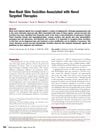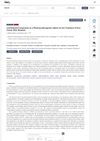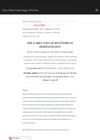Mechanisms of Cutaneous Adverse Events During Targeted Cancer Therapy
November 2022
in “
The journal of investigative dermatology/Journal of investigative dermatology
”
EGFR papulopustular rash pruritus dry skin hair morphogenesis skin homeostasis skin barrier defects inflammation type 2 cytokines SOS Ras-Raf-MEK-ERK pathway upper hair follicle epidermal growth factor receptor rash itching hair growth skin balance skin barrier issues cytokines SOS protein Ras-Raf-MEK-ERK signaling pathway hair follicle

TLDR Targeted cancer therapies can cause skin side effects, but activating SOS in the skin may help reduce them.
EGFR-targeted anti-cancer therapies, while effective against many solid cancers, often cause cutaneous adverse events such as papulopustular rash, pruritus, and dry skin due to EGFR's role in hair morphogenesis and skin homeostasis. Research using a mouse model with genetic ablation of EGFR in epidermal cells has shown that these skin issues are linked to skin barrier defects and inflammation during new hair growth, driven by type 2 cytokines. Activation of SOS, upstream of the Ras-Raf-MEK-ERK pathway, can rescue this barrier dysfunction, suggesting a common mechanism for adverse events from other inhibitors targeting this pathway. EGFR activity is particularly crucial in the upper hair follicle, and ongoing research aims to map the cellular and molecular players involved, with the goal of identifying druggable pathways to mitigate these side effects in cancer patients.




